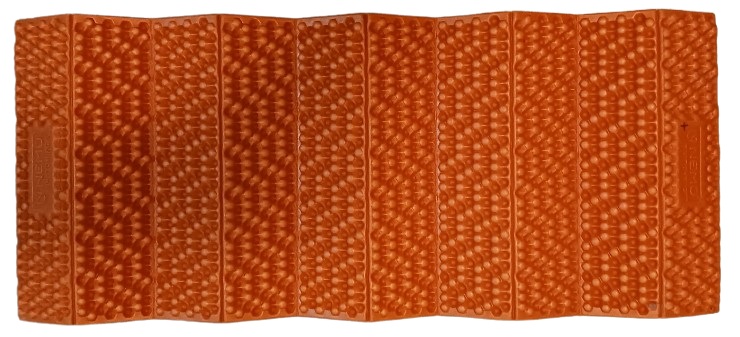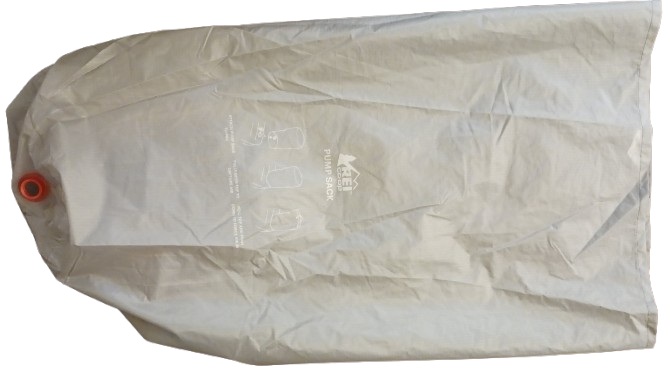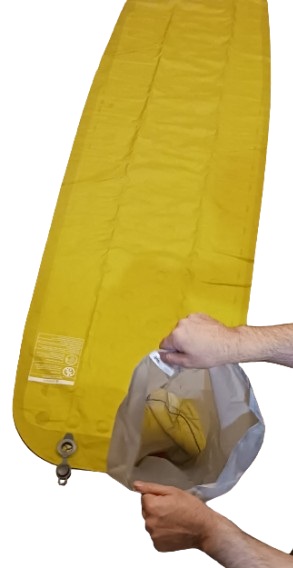Learn about Sleeping Pads for Backpacking

Table of Contents
Sweet Spot Recommendations
For most budget backpackers, I recommend a sleeping pad with an R-value of 2 to 4 (used with a sleeping bag having a rating of 20° F). The higher the R-value, the better, as your budget allows. For older people and side-sleepers, I recommend a thick air pad such as the Big Agnes Rapide SL.
Sleeping Pads Are Essential
Sleeping pads are essential for comfort and warmth. Without a sleeping pad, much of your body heat will be absorbed into the ground because your body weight will compress the bottom of your sleeping bag and cause it to lose its insulative loft.
A super-warm sleeping bag is a waste of money if you don’t use it with a warm sleeping pad.
Closed-cell Foam Pads

Closed-cell foam pads are made of foam containing pores that are enclosed, unlike the open pores of a sponge.
Self-inflating Pads

Self-inflating pads consist of a layer of open, sponge-like pores sandwiched between two layers of synthetic fabric. Opening a valve allows the “sponge” to expand and suck in air. They’re not completely self-inflating.
Air Pads

Air pads are like inflatable pool floats. They typically contain insulation to increase warmth.
Air pads often come with a lightweight pump sack. Although they can also be inflated by mouth, this is not advisable because moisture from breath causes mildew and damages insulation.



to push air into air pad
Pros & Cons of Sleeping Pad Types
| Pad Type | Pros | Cons |
|---|---|---|
| Closed-cell foam | Cheap Light Durable Reliable (don’t puncture, rip or leak) Can be used as sit pads Can be placed under other types of pads to increase warmth | Uncomfortable, especially for side sleepers Bulky |
| Self-inflating | More comfortable than closed-cell foam pads More compact than closed-cell foam pads Easier to repair than air pads Less expensive than air pads | Less comfortable than many air pads Less durable than closed-cell foam pads Heavier than closed-cell foam pads and air pads Less reliable (punctures, rips, leaks) than closed-cell foam pads More expensive than closed-cell foam pads Not completely self-inflating Best inflated by a pump sack or may be damaged when inflated by mouth Self-inflation degrades over time |
| Air | Comfortable Compact Many are insulated and warm | Expensive Not durable Unreliable (punctures, rips, leaks) |
R-value
A sleeping pad’s warmth is measured by its R-value, determined by standardized testing method ASTM F3340-22.1
R-values are additive—you can increase total R-value by layering multiple sleeping pads. Closed-cell foam pads are great for placing under air pads to increase total R-value. I have an REI Helix air pad with an R-value of 4.9 that I use in spring and fall. In the winter, I set it on top of my Nemo Switchback closed-cell pad with an R-value of 2.0 to get a total R-value of 6.9.
Recommended Sleeping Pad R-Values and Sleeping Bag Temperature Ratings According to Temperature2
| Night Temperature Low | 50°F | 32°F | 20°F | 0°F |
|---|---|---|---|---|
| Pad R-value | 2 or less | 2-3.9 | 4-5.4 | 5.5 or more |
| Bag Temperature Rating | 30°F or lower | 20°F or lower | 15°F or lower | 0°F or lower |
